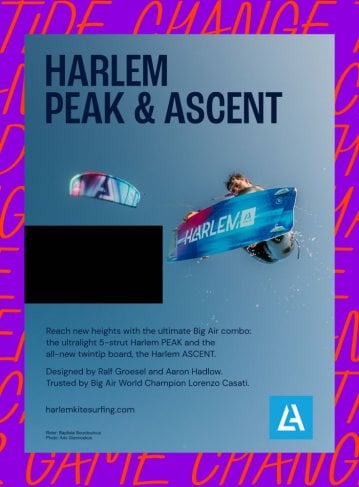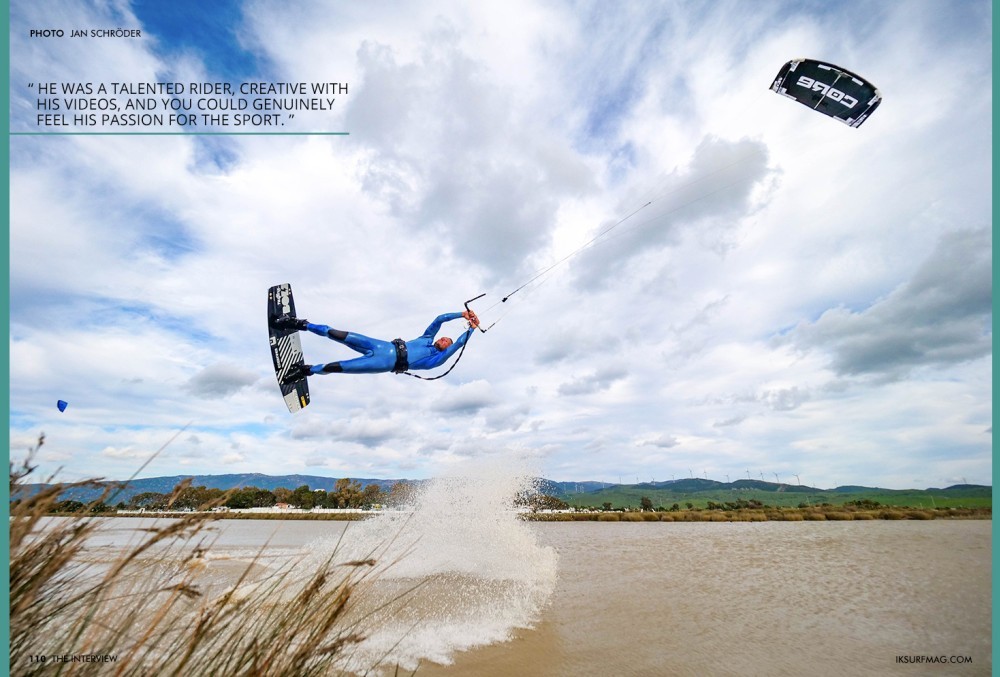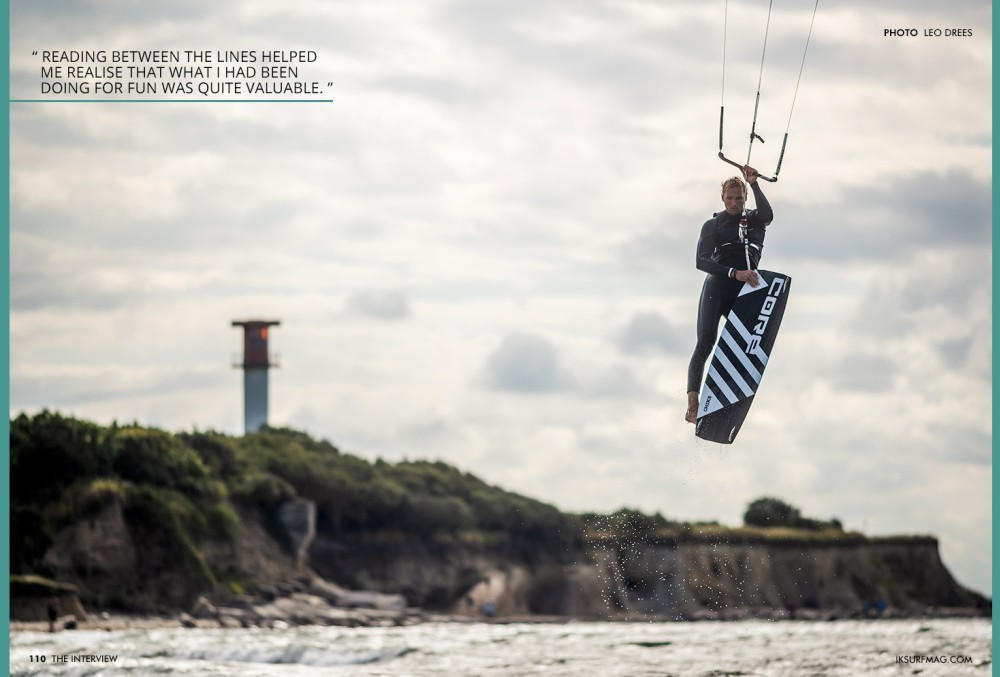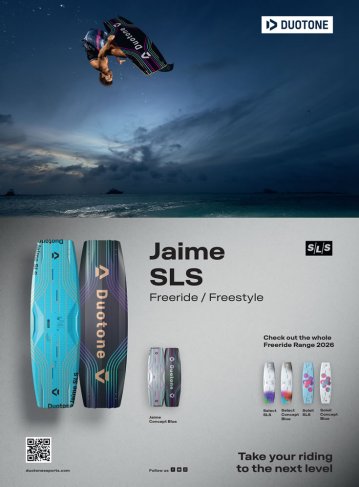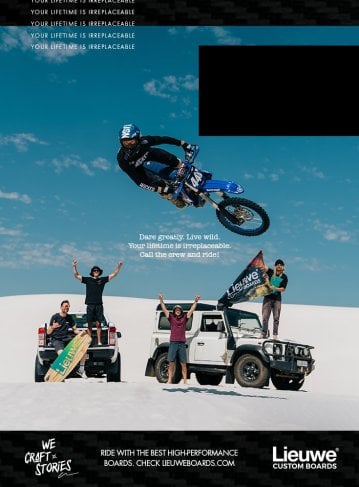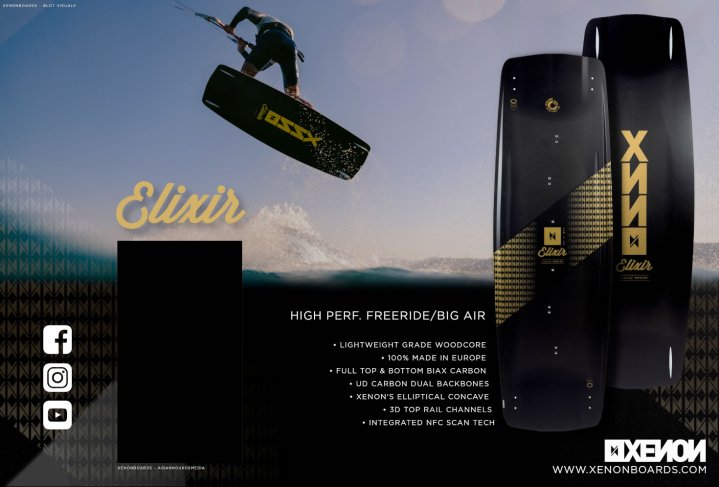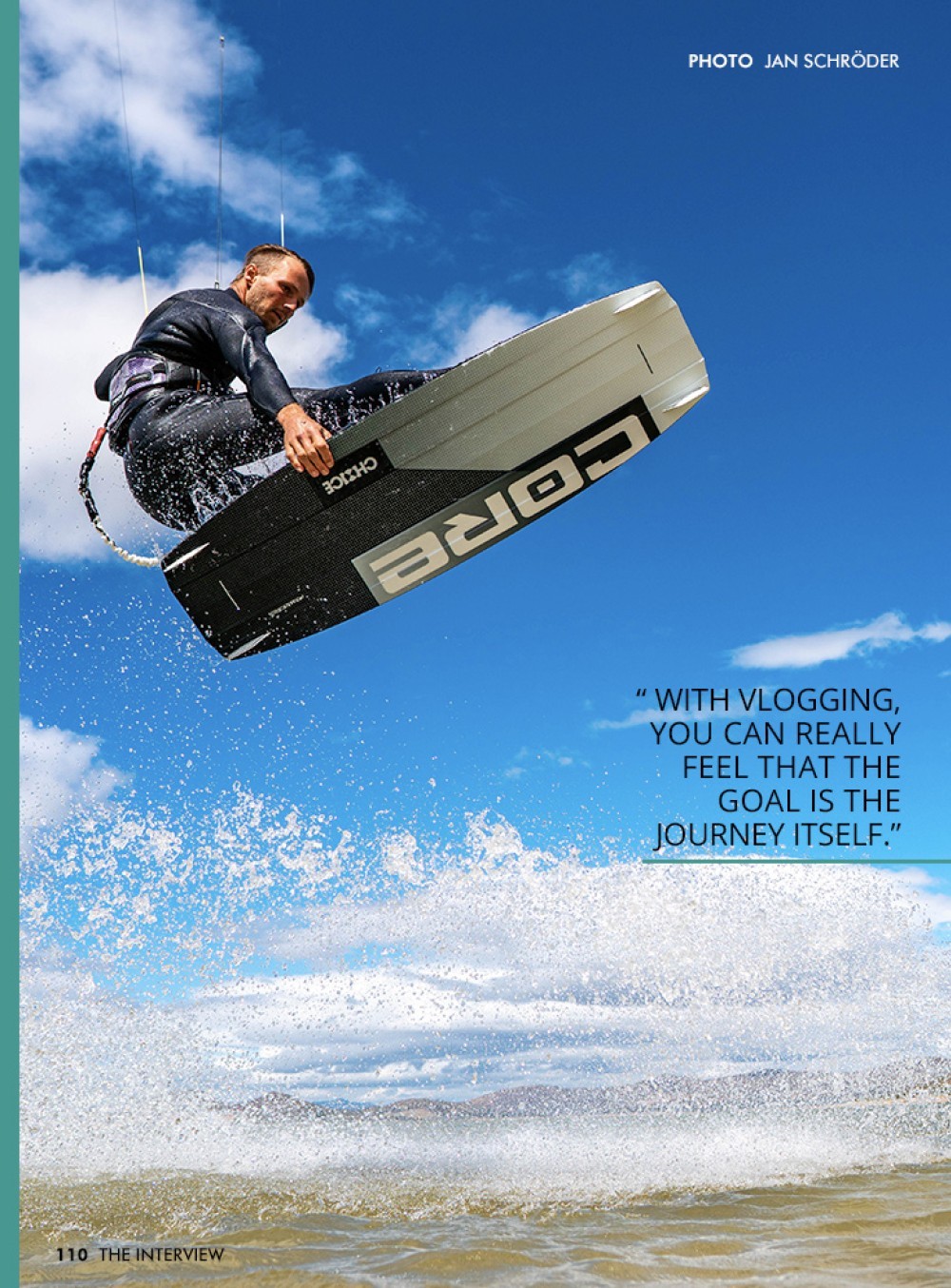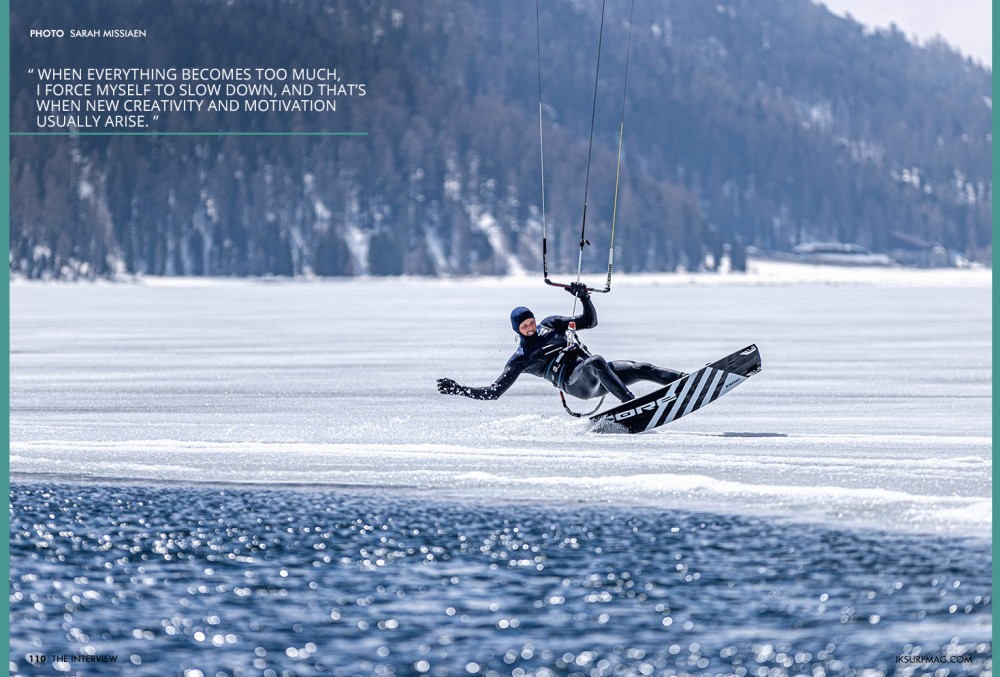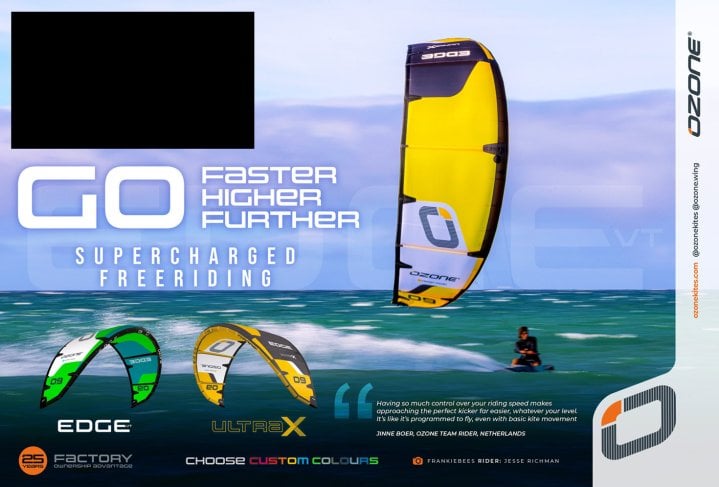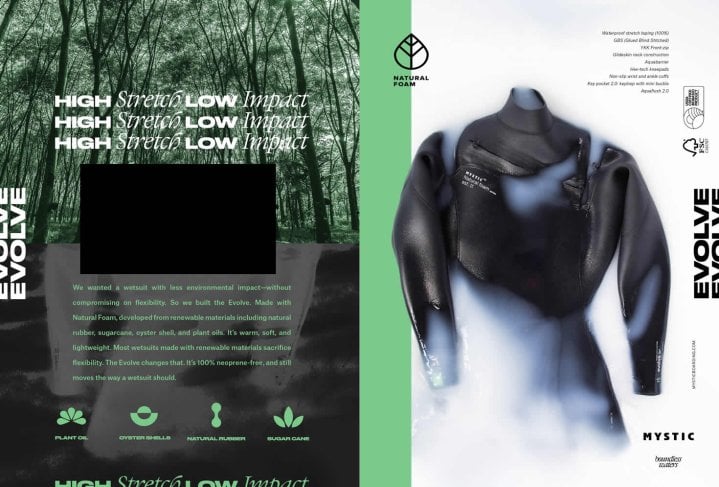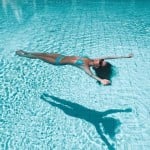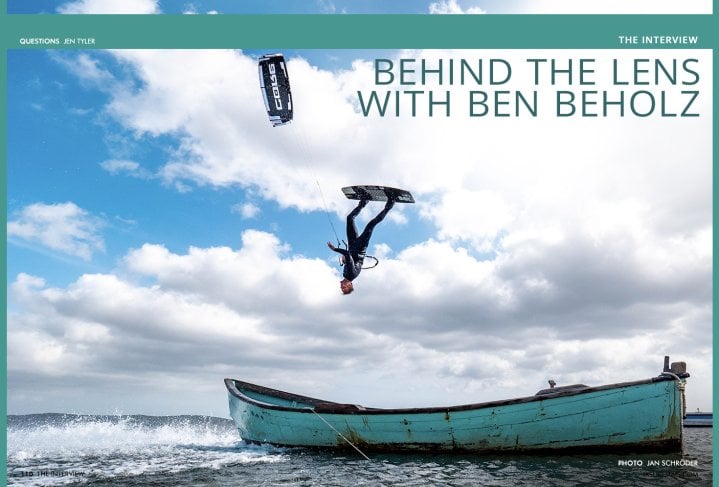
The Interview - Ben Beholz
Issue 110 / Wed 16th Apr, 2025
Fresh off winning Best Vlogger of the Year at the IKSURFMAG Readers Awards (again!), he sat down with Jen Tyler to talk about his vlogging journey. Ben shares what it takes to keep the stoke alive, the challenges of balancing content creation with progression, and why his passion for storytelling keeps him hooked. Get ready to dive into the mind of our readers’ favourite vlogger!
Ben! It’s fantastic to have you here finally, and a huge congratulations on winning Best Vlogger of the Year (again!) at the 2024 IKSURFMAG Readers Awards! We want our readers to get to know you better, so let’s start from the very beginning. Where did you grow up, and how did that influence your connection with water sports?
Hey, Jen, I really appreciate your kind words! To be honest, I didn’t expect this at all. Seeing so many people enjoy my vlog enough to support me is amazing, and that truly means a lot.
I grew up near Lake Constance, in southern Germany, right by the water. I didn’t learn to swim until I was 7, but once I did, I jumped headfirst into all kinds of water sports. When I turned 10, I started windsurfing at our local school, and by the age of 12, I was mesmerised by the kite surfers I saw at Lake Como in Italy. I was eager to try kite surfing right away, but my parents weren’t on board with it at the time, especially since it didn’t have the best reputation back then. So, I had to wait until I turned 18 before I could finally hit the waves with a kite. Looking back, I actually appreciate that wait now!
Who were your biggest inspirations in the sport when you started out? What inspired you to start vlogging about kiteboarding?
Tom Court was definitely my inspiration! At first, I didn’t find jumping high to be very exciting; it was the wakestyle that truly inspired me. I managed to land my first unhooked Raleys before I could even perform a basic jump. Tom Court set the benchmark for me at that time. He was a talented rider, creative with his videos, and you could genuinely feel his passion for the sport.
When I started kite surfing, there wasn’t any short-form content like there is today. The main platforms for kiters to share their videos were Vimeo and YouTube. Since my parents didn’t provide much financial support, I had to find a way to get kites and boards on my own. I decided to produce a video in Venezuela and submitted it to Slingshot. They liked it, and as a result, I secured my first small deal with them.
That’s how I began earning money as a kite instructor, and since then, I have basically always been on or in the water.
When did you realise it was more than just a hobby, and when did you decide to pursue it as a career? Do you have another job while working as a kiteboarding and foiling vlogger?
CORE made things clear to me from the beginning. After three years with Slingshot, I felt the urge to switch to CORE, so I bought my first set of CORE kites. I continued creating content purely out of joy until CORE took notice of my work and offered me my first real sponsorship deal. This was the first contract I examined, and reading between the lines helped me realise that what I had been doing for fun was quite valuable. The transition was gradual. At that time, I was switching to CORE while studying architecture. Afterwards, I worked as an architect for two years—first full-time, then part-time, and eventually not at all. Now, content creation is my full-time job. While doing something else on the side would be exciting, it simply isn’t feasible for me time-wise.
What type of content do you think performs best in the industry: travel vlogs or tutorials?
Tutorials tend to have a longer lifespan and often generate more views, subscribers, and reach over time, while travel vlogs typically become irrelevant after a few weeks. If you’re trying to decide what type of content to produce, the first question should be which format you enjoy more. To succeed in the long run, you need endurance and must maintain your passion for it. Otherwise, the constant pressure to deliver can become overwhelming.
How does it feel to be named Vlogger of the Year?
I have to admit that I’m a bit surprised because my channel has significantly fewer subscribers than Kevin’s, for example. I’m not sure why people choose to click on my name instead of another YouTuber’s, but the fact that they do means a lot to me. I believe viewers can sense my great passion for running my vlog. At least, that’s how I see it, and I’m truly grateful for their support.
What goes into creating a successful kiteboarding vlog? How much work happens behind the scenes?
It’s very different; sometimes videos happen spontaneously, for example, when you’re driving past a frozen mountain lake and there’s wind. Other times, a video shoot involves a lot of planning and thinking ahead. But that doesn’t necessarily mean the video is better or worse. I believe that if I were to calculate the hours I put into the production of my vlogs, it would feel like a full-time job compared to being on vacation!
Do you have a creative process when planning your videos or just go with the flow?
My vlog is often just a reflection of my own personal development as a person and as a water sports enthusiast. Often, it’s things I really want to try or accomplish, which I then turn into a video.
I don’t think I’m a particularly ambitious athlete, but my vlog motivates me to try a new trick until I finally master it. There are shootings that are completely outside of my comfort zone, and there are, of course, shoots that go smoothly. However, the intention behind them is usually the same: to have an idea and bring it to life. What I don’t like, though, is producing content just for the sake of producing content. It has to be something I’m genuinely excited about.
How do you balance the pressure of staying consistent with content while also progressing in the sport?
Yes, that’s a really good question. I believe that if you rest, you rust. It’s important to keep the machine running. Certain daily rituals help me stay on track. With vlogging, you can really feel that the goal is the journey itself. You just start moving and try to stay in motion, and then new ideas and opportunities continuously open up. In the end, that’s exactly what helps you progress as an athlete. That’s why I don’t believe they hold each other back but rather complement and enrich each other.
Has vlogging ever gotten in the way of fully enjoying a session?
It definitely shouldn’t be disruptive. As is often the case in life, it’s about finding the balance between kite sessions with a camera and kite sessions without a camera. But having a cool vlog in the bag feels as good as scoring an awesome session. In the end, it’s the reward hormones that need to kick in!
Have there been moments when you wanted to quit or take a break from content creation?
Yes, that happens often. I’m constantly on the go, and it feels a bit stressful most of the time. Often, when everything becomes too much, I force myself to slow down, and that’s when new creativity and motivation usually arise. Then, I usually feel really eager to get started again. But it’s an unsettled life you must be prepared for.
How do you see the future of kiteboarding content evolving?
I have no idea. I find the current trend towards shorter and shorter videos a bit unfortunate, as I enjoy producing longer YouTube videos the most. Especially with all the AI stuff that’s developing so rapidly, I have no idea what this will mean for us “real” kite surfers who create content. But it’s definitely exciting to see how it all unfolds.
Are there any big projects or trips coming up that you’re excited about?
Absolutely, but it’s still too early to discuss it. I have a few trips planned that I’m really looking forward to. Additionally, I’m enjoying our current “You Should Surf” project. It’s a great opportunity to reinvent myself and try new things.
Videos
By Jen Tyler
Italian/Egyptian Jen Tyler grew up on the sandy beaches of the Red Sea and has been on the IKSURFMAG & Tonic Mag team since 2017.



